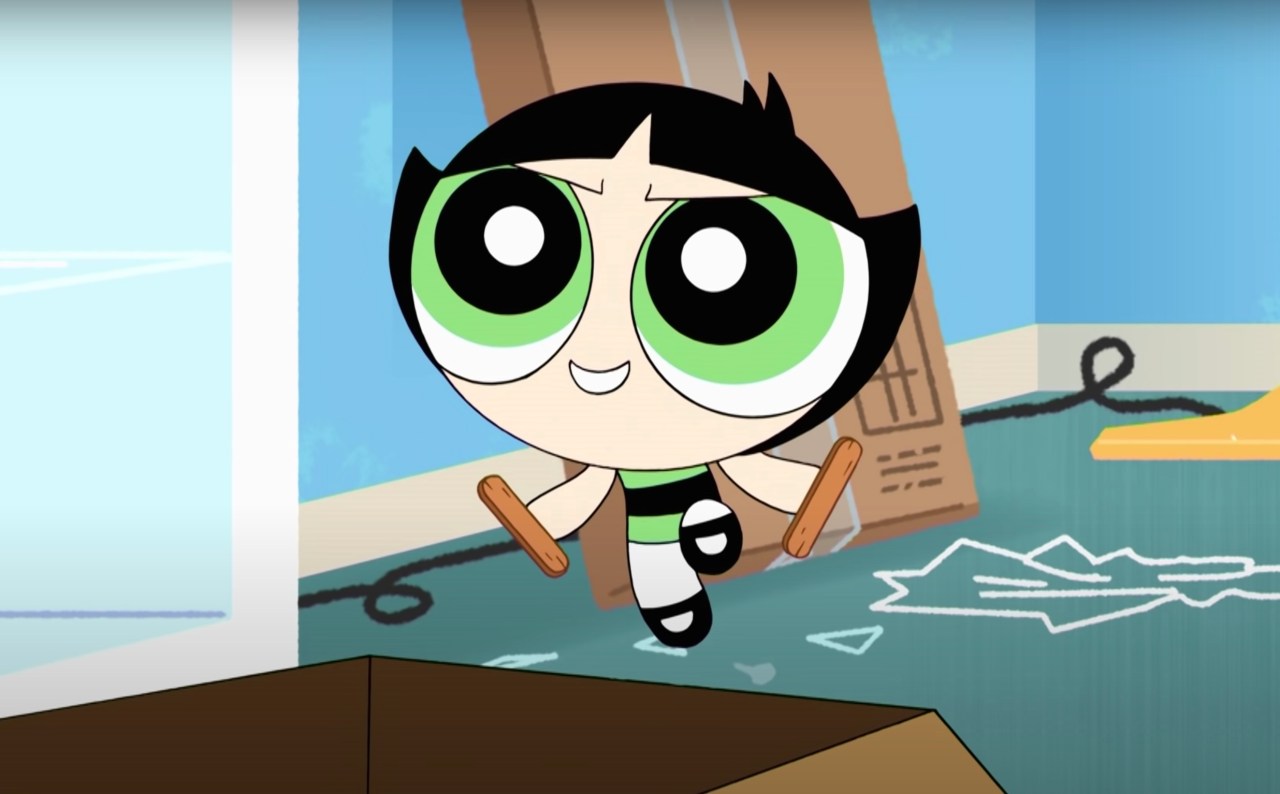
Here’s Why Buttercup From ‘The Powerpuff Girls’ Is The Most Important Character From Your Childhood
The 1990s were big for women and girls in the United States. Historians and feminists alike will point to the 1990s as encasing the infamous Third Wave of feminism, where women began not only speaking up for their right to equitable treatment as their male counterparts but began witnessing a plethora of new versions of womanhood that were possible for them, thanks to television programming that showed women proud of their sexuality, getting educated, choosing careers, families, or both, and defining themselves by more specific terms in what would be the start of an intersectionality barrage for the next three decades.
Little girls during this time were also being introduced to more female protagonists with more dimension than simply being love interests or accessories to boy characters. Of course, the 1990s weren’t perfect – though representation was diverse, many of the messages the shows delivered were one-dimensional with happy conclusions at the end of the half hour. In episodes about not doing drugs, not bullying, and looking out for friends and family, “good girls” were often celebrated as girls who followed the rules, girls who were pretty but not promiscuous, girls who worked hard, were popular, talented, and well-liked. But of course, there were the outlying characters. The Tai Frasiers that balanced out the Cher Horowitzes, much in the same way Daria’s appeal comes from being so different from her mainstream, bubbly sister Quinn. The Powerpuff Girls gave us a wealth of female characters with three main protagonists and a host of female villains for them to fight. And nobody had as much fight as Buttercup. In fact, I believe her to be one of the most important cartoon characters of the 1990s because of what she represents: superior strength, a willingness to be different, and a version of femininity that so many of us fringe girls needed to see in the late 1990s and early 2000s.
Every single one of the Powerpuff Girls was important, but Blossom and Bubbles represented safe female character types that other animated females had done before, whereas Buttercup’s characterization broke barriers. She was the toughest fighter. She dated one of the bad guys and kept it a secret. She knocked half of Townsville’s teeth out all in the name of coins. She was a heroine whose main character flaws were her temper and disinterest in conformity, but she was a breath of fresh air for so many young girls who didn’t have much to look to by way of aspiration. Sure, there were plenty for us to choose from, with varying skin tones and hair types and ages. But something about Buttercup felt safe if you were a girl whose personality got overlooked if it didn’t have some other title like cheerleader or homecoming queen attached to it. If you were a girl who liked martial arts, Buttercup was for you. If you were a rebellious girl, Buttercup was for you. If you were a girl who simply didn’t care for girl stuff and didn’t care who didn’t like it…Buttercup was not only for you, but you likely had her posters on your wall.
Buttercup’s appeal also stems from her ability to give young girls a different version of femininity to muse over, one that dares to celebrate all that makes her different. From her provocative personality to her edgy vocals (supplied by the talented E.G. Daily), Buttercup accomplishes and acknowledges all of her badassery while still wearing a dress, tights, and Mary Jane shoes. This is a concept that’s still unheard of; women and girls who are good at what they do and they know it, flaunt it, or show it off are still remarked as being too full of themselves, too bitchy, and too much of a problem. When do men pay a consequence for being skilled or confident? Perhaps it’s happened a few times, but not nearly as often as women and girls are chastised for doing the same. Buttercup blew that wide open with the general support of her single dad, the Professor. It was in this dynamic that other girls found a fun place to hang out that would benefit us later in life. The world doesn’t stop shoving little girls into boxes after elementary school or we get our driver’s licenses and start going to work and paying bills. In every arena, all women are forced to double and triple check themselves while men are entitled to advancements they don’t even have to express interest in. And if a woman speaks up about the unfairness of this or about the dysfunction of using outdated systems to solve modern problems, she’s often labeled and targeted as being “a problem.”
But Craig McCracken showed Buttercup pretty much always speaking up, and her doing so taught a generation of girls that the whole “pants vs. dress” trope is alive and well, but you don’t have to bow down to it or let it intimidate you. Girls can triumphantly save the day, girls possess their own unique talents, and they don’t need permission from anyone else to be amazing at what they are.
